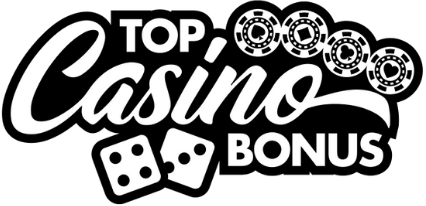How esports betting odds are calculated behind the scenes
When folks first start dabbling in esports betting, they often assume the odds are whipped up like magic — just numbers seemingly pulled out of thin air. But make no mistake, behind every decimal, there’s a carefully engineered system grounded in mathematics, behavioral patterns, and cold-hard data. You’re not dealing with guesswork here. You’re stepping into one of the most intricately fine-tuned mechanisms in the entire gambling industry.

Table of contents
Understanding the role of probability and margin
Before any odds make their way onto the screen, traders evaluate raw probability based on all available data. We’re talking team rosters, head-to-head performances, individual player stats, map pools, patch changes, and even psychological patterns. The starting point is always implied probability — the true chance a team has to win. For example, if a team has a 60% chance of winning, the raw odds without house edge would be 1.66. But a sportsbook won’t offer that straight up. They shave a bit off the top — that’s what we call the “vig” or “margin.” To better understand how this margin influences odds, check out the sportsbook’s approach at [SugarHouse Casino](https://www.topcasinobonus.com/casino-review/sugarhouse-casino/). This house edge is what separates fair odds from the sportsbook’s profit-making odds. Casual bettors rarely see it, but it’s always there, baked into every offering. Run the math, and you’ll quickly see how a 5%-8% margin on each market can add up real quick. Those who dive deeper into [casino bonuses](https://www.topcasinobonus.com/casino-bonuses/) will often find similar embedded edges in promotional packages.
Trading algorithms versus human risk assessment
Here’s where the modern and traditional collide head-on. These days, many betting houses use algorithmic models to generate real-time prices, particularly for in-play betting. The machine crunches historical data, match momentum, kill differentials, and a thousand other data points live on the feed. And while these algorithms are as fast as a bullet, they aren’t infallible. That’s why seasoned risk managers still oversee esports betting desks — especially during major tournaments when the stakes are sky-high. I’ve seen dozens of well-trained algorithms stumble due to last-minute default wins, server crashes, and even player disqualifications. That’s when the human eyes step in to recalibrate, balancing risk based on exposure and anticipated volume. The goal here was never just to be accurate — the goal is to be profitable while keeping books balanced.
Market influencers and line movement
Books set the opening odds, but let me tell you — the market talks back. Sharp money, typically from syndicates or individuals who actually understand the game inside and out, will pound soft lines the moment they open. That weight of money forces oddsmakers to move prices rapidly, trying to chase equilibrium. What you don’t want is lopsided action — all liability on one side. This herd movement plays havoc on early numbers. I watched a CS:GO underdog shift from 2.80 to 2.20 overnight because pros spotted an inside change in the map veto process. Market intelligence like that doesn’t show up on public dashboards — but it massively shapes the odds you see on your screen by the time you log in. If you’ve ever struggled with keeping your bets disciplined, take a deeper look into [bankroll strategies](https://www.topcasinobonus.com/guides/bankroll-management-strategies-for-roulette-players/); while designed for roulette, plenty of the same logic is transferable to esports betting, especially when chasing arbitrage or hedging options.
In-play volatility and pricing sensitivity
Live betting on esports is a beast of its own. Unlike traditional sports, which have pauses and breaks, esports can flip in a heartbeat. One misplayed team fight in League of Legends can swing a betting line by 40% instantly. That’s why you’ll often see books temporarily suspend markets during crucial in-game moments. This isn’t hesitation — it’s self-preservation. Comparatively, in games like DOTA 2 or Overwatch, hero draft dynamics shift expected outcomes even before the match starts. That’s why some models feed draft-phase variables into real-time pricing adjustments. It’s not just who’s playing — it’s *what* and *when* they play that dictates risk. These dynamic adjustments require not only strong tech infrastructure but also precise human intervention. I’ve personally watched pricing teams work overtime correcting automated errors where bot algorithms overreacted to insignificant HP swings — turning solid odds into risky liabilities.
Regulatory compliance and risk limitations
Regulation casts a long shadow over how odds can be offered. You can’t just sling prices left and right. Books must adhere to local licenses, anti-corruption protocols, and fair-trade requirements. Smart operators integrate surveillance tools that track betting activity against match timelines — especially in vulnerable lower-tier matches where match-fixing remains a threat. Internal audits often demand full logs on how specific odds were derived, reviewed, and adjusted post-bet. I’ve spent countless nights preparing reports detailing market behavior pre- and post-line movement during suspicious volumes. Everything’s got to be squeaky clean. If you’re betting across multiple books and want to ensure your finance remains on point, don’t ignore [financial planning](https://www.topcasinobonus.com/guides/financial-planning-for-gamblers-managing-wins-and-losses/) frameworks. These help manage your risk during streaks — both hot and cold.
Closing odds and market efficiency
Ultimately, the closing odds — those final prices before a match starts — are the industry’s best estimate of true outcome probability. It’s the moment where all money, models, and news have had their say. In my years, I’ve seen sharp bettors slam closing lines to extract max value, knowing these odds are statistically most accurate. Funny thing is, even after all this technology and complexity, the old-school rule still applies — “the house always wins,” because they know how to calculate risk far better than most bettors ever will. And that, really, is the hidden craft behind esports odds. Precision, discipline, technology, some instinct — and a whole lot of quiet math behind the curtain. Knowing how it all ticks? That’s your edge. Not luck — understanding. Same as it ever was.


0 Comments